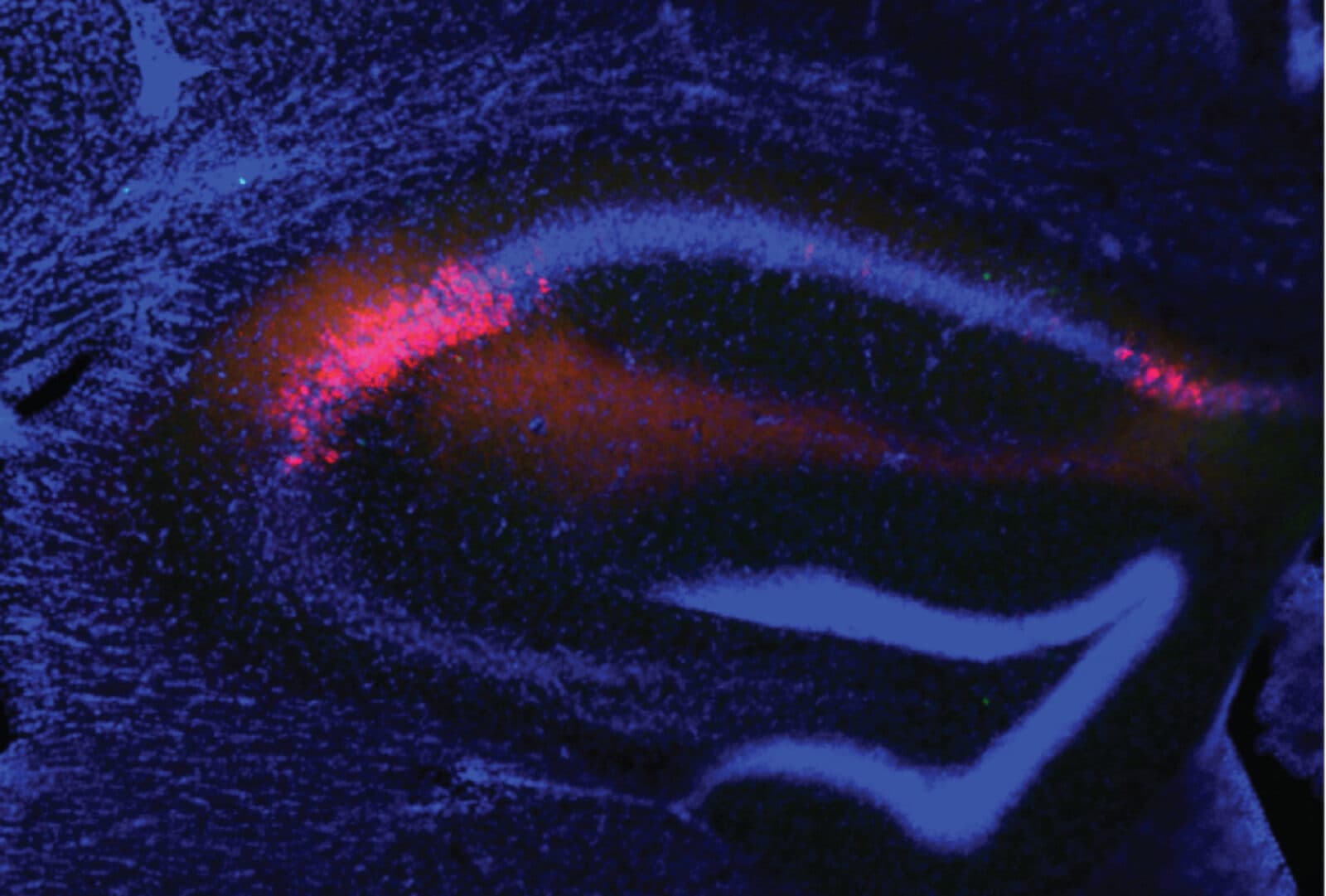No Brain Untouched
by Lindsay Borthwick
The astonishing animals brain researchers study to answer fundamental questions about the brain

The Author
Astonishing. That word came up several times in our research for this roundup of neuroscience news from the Kavli Institutes and Kavli Prize laureates in neuroscience. Read on to learn about the astonishing animals—from the man-killer scorpion to Bengalese finches—that brain researchers are using to understand fundamental questions about the brain and development treatments for brain disorders. As their work makes clear, researchers are leaving no brain in the animal kingdom untouched as they seek to discover the secrets of the 100-billion-neuron organ in our heads. Astonishing, too, are sophisticated new computational models of the prefrontal context that could lead to “smarter” artificial intelligence—and the implication of new neurotechnologies with the power to read and write neurodata in living organisms.
Fountain of Youth?
A few doses of an experimental drug called ISRIB rapidly reverses age-related cognitive decline in mice, according to a new study led by Susanna Rosi and Peter Walter—both members of the Kavli Institute for Fundamental Neuroscience (Kavli IFN) at the University of California, San Francisco. The drug’s rapid effects suggest cognitive losses that sometimes accumulate with age may not be permanent but rather a reversible physiological “blockage,” according the researchers. Cells respond to stresses, such as viral attack or chronic inflammation, in various ways, including by shutting down protein production—a cellular quality-control mechanism known as the integrated stress response. ISRIB, a small molecule discovered in Walter’s lab in 2013, inhibits this response and fires up a cell’s protein production machinery again. In the new study, the cognitive benefits of ISRIB treatment persisted for weeks. When the researchers looked at the brain’s of mice treated with the drug, they found cellular changes that mirrored the animals’ mental gains.
Astonishing Animals
The research of three Kavli IFN members is showcased in a UCSF Magazine article about the “scurrying, soaring, and slithering wonders” that are teaching scientists how the body works—and how to fix it. Learn about Michael Brainard’s studies on speech disorders with feathery songsters called Bengalese finches, and how Qili Lui is probing the drive to eat specific nutrient-rich foods using fruit flies. And, from the lab of Kavli Prize in Neuroscience laureate David Julius, there are the man-killer scorpions and black rock scorpions, venomous creatures that are helping the Julius lab decode the origins of pain–and potentially treat chronic pain.
Brainier AI
Artificial intelligence still falls far short of matching the human brain, particularly when it comes to applying old lessons to new situations. Now, a new computational model of brain activity in the prefrontal cortex—an area of the brain involved in working memory and decision making— performs as well as the human brain on a cognitive test that requires the player to constantly adapt to new rules. The model was developed by neuroscientists Terence Sejnowksi and Kay Tye at the Salk Institute of Biological Studies, who are both members of the Kavli Institute for Brain and Mind, which partly funded the work. The new model mimics gating, the mechanism the brain uses to control the flow of information to parts of a network, which has never been modeled at the whole network-level before. The advance helps researchers understand how the brain is organized and could also help them design better machine learning systems, according to the authors.
Deletion Detective
An article in Spectrum highlights research led by Columbia University’s Steven Siegelbaum and his team that could point the way toward a treatment for the social problems commonly experienced by people with autism and some other brain disorders. The researchers used an antidepressant to restore social memory in a mouse model of 22q11.2 deletion syndrome, a genetic condition linked to psychiatric disorders. In experiments using genetically altered mice, a drug called spadin normalized the activity of neurons in the CA2 region of the hippocampus, which is critical for social memory, or the ability to remember people. “By changing one molecule, we restored normal brain activity and normal behavior in mice,” Siegelbaum said. “This is strong evidence that the pattern of brain activity we are studying is connected to the social behavior we see, and it offers a promising way forward to treating the social symptoms of people with schizophrenia, and perhaps other disorders with abnormal social behavior.” Siegelbaum is a member of the Kavli Institute for Brain Science at Columbia.
The Rise of Neurotech
In an opinion article in Scientific American, Dario Gil of IBM Research writes that “neurotechnology is at the dawn of its technological journey” and calls for consideration of its risks, ethics and the potential need for regulation. He argues that neurotech applications should be evaluated based on the potential consequences for “the autonomy, privacy, responsibility, consent, integrity and dignity of a person.” The article stems from a symposium, organized by Columbia University’s NeuroRights Initiative and IBM, focused on the scientific, security and social issues raised by neurotech. The Initiative is directed by Rafael Yuste, co-director of the Kavli Institute for Brain Science at Columbia, who recently told Reutersthat a set of "neuro-rights" should be added to the Universal Declaration of Human Rights adopted by the United Nations.